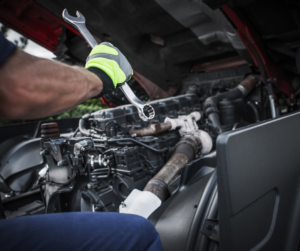You’ve invested a lot in your fleet of vehicles. From maintenance to fuel costs, it’s important to ensure you get the most out of every one of them. In this blog post, we’ll be going over how you can do a thorough check-up on your fleet vehicles to avoid costly repairs during the winter months and beyond! It’s a good idea to check your vehicle, as it will help identify any problems that may have occurred during the winter season.
The purpose of doing this inspection is twofold: first, it helps you be prepared for any potential issues; second, it allows you to ensure everything is functioning properly before problems arise and things start heating up again (literally).
Why Perform Winter Check-Ups?
Winter is a harsh environment for your fleet vehicles. The cold weather increases the risk of accidents, which can cause damage to your fleet vehicles and even injure you or your drivers. In addition, winter weather can make it difficult for you to deliver on time or at all if you cannot drive safely in adverse conditions. If you don’t have good visibility due to foggy windows (or other factors), this could lead to missed deliveries and lost customers!
How Can You Tell When Winter Check-Ups Are Needed?
This is the best way to determine when a vehicle needs a winter check-up. The outside of your fleet will tell you if it’s time for a visit from our mechanics.
Look for signs of rust and corrosion on the body of your vehicles, including:
- Rust spots on doors and fenders
- Cracks in windshields or windows
- Damage to tires (bald tires can be dangerous)
How Often Should You Perform Winter Check-Ups?
The answer to this question is really up to you and your business. Some fleet managers prefer to have their vehicles checked during regular maintenance visits, while others prefer a more comprehensive approach that includes an annual inspection. The best way to determine the frequency of your winter check-ups depends on the type of vehicle being driven, its age and condition, how often it’s driven in inclement weather conditions (especially snow), where you live (if you live in an area with harsh winters), etc.
We recommend having all your vehicles checked at least once yearly–and even more frequently if necessary!
Which Items Do You Need to Inspect During a Winter Check-Up?
During a winter check-up, you’ll want to inspect the following items:
- Tires, brakes, lights, and wipers. Check your tires’ tread depth (you should be able to see it in 2/32nds of an inch). If they need replacing now or soon, replace them before the weather worsens. Brake pads should be inspected for wear, and rotors should be checked for cracks or warping; if either is damaged beyond repair, you may need new brake parts and tires. Lights should be tested by turning them on at night to ensure they work correctly. If any are out or flickering frequently during use, that could mean there’s a problem with their wiring harnesses that needs addressing immediately so it doesn’t lead to more significant issues later down the road when driving conditions worsen even further due to ice accumulating on roads after snowfall overnight.
To avoid costly repairs, thoroughly checking your fleet vehicles in the winter months is important.
Winter is the most challenging time of year for vehicles, and it’s important that you take the necessary steps to ensure that your fleet vehicles are ready for whatever winter throws at them. Here are some tips for performing a thorough check:
- Inspect all tires, including the tread depth and sidewall condition. If you have any doubts about whether or not to replace your tires, bring your vehicle in, and we can help you decide what’s best.
- Check fluid levels in each tire (including coolant), windshield washer, and brake fluid. Ensure everything is topped off so there won’t be any surprises later on down the road!
- Keep an eye on belts and hoses; if they’re starting to look worn out or cracked, it might be time for replacement sooner rather than later!
As you can see, there are many reasons why doing a winter check-up on your fleet vehicles is important. Not only does it help ensure that they are safe to drive in bad weather and snow, but it also prevents significant damage from occurring. If you plan on driving during the winter months and do not have time for regular maintenance, consider hiring a professional to perform this service on your behalf.


